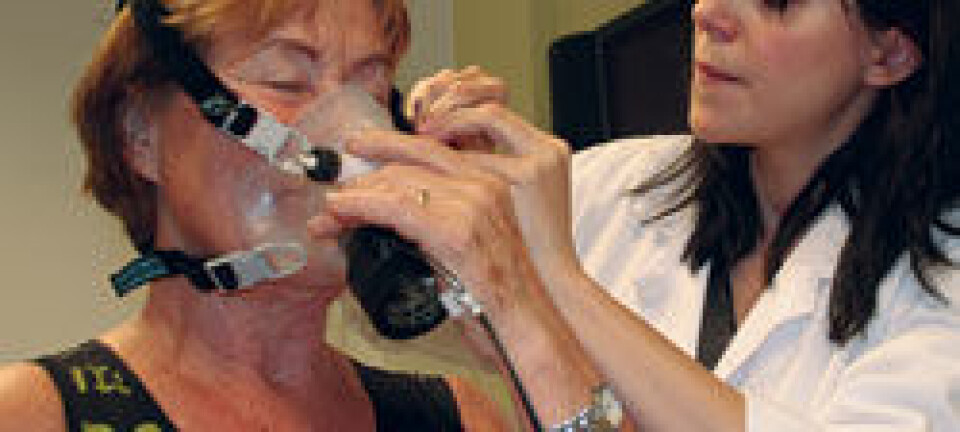This article was produced and financed by The Norwegian School of Sport Sciences

A simple change of routine reduces the risk of shoulder injuries in handball
Researchers have devised a new warm-up routine to prevent shoulder injuries.
Research Fellow Stig Haugsbø Andersson from the Norwegian School of Sport Sciences (NIH) has studied whether it is possible to prevent shoulder problems in handball at the highest level.
His findings are encouraging.
Using a ten-minute warm-up program, the risk of shoulder injury was considerably reduced among players taking part in the survey.
“The results were very positive. There will always be five or six players on any top handball team who are struggling with shoulder injuries. If they follow our warm-up program, the number of players with shoulder problems will be reduced to three,” says Haugsbø Andersson.
New warm-up programme
46 teams (combined of women's and men's teams) from the Norwegian Elite and First Division took part in the research project. Half of the teams performed their traditional warm-up, while the rest included the new programme.
The program includes exercises to provide more mobility and strength in the shoulder, increasing shoulder blade strength, and rotational movement in the spine.
“The coach or team captain were responsible for warm-ups instead of the club’s medical personnel. This is important, so that the program can also be used by teams in the lower divisions that do not have a medical team,” says Andersson.
But problems were also reported with the new warm-up program: Some thought it was too time-consuming and the recommended frequency was sometimes not followed.
“We recommend that the program is used at least three times a week. But the average reported was only 1.6 times a week,” he says.
Big potential for fewer injuries
Many handball players do not reach their full potential because they struggle with shoulder problems.
Injuries often come in isolation, and training therefore has to be stepped down when problems arise. That means players are unable to achieve an optimum continuity in their training, which can degrade their performance.
This is true not only for elite players but also for players in lower divisions.
“Top teams have around five training sessions per week. That amounts to approximately 100 hours of warming-up a year. If those hours are spent on a programme able to prevent shoulder problems, then the chances are that the players will be able to avoid such ailments in the future,” says Andersson.
Previous research has documented high rates of shoulder problems occurring in top handball teams. But there have never been any studies conducted on prevention.
“Preparing and testing a training programme is both a time-consuming and costly process. But it’s also what has been missing in order to find a solution to a major problem for handball. I benefitted from working closely with the Norwegian Handball Federation,” says Andersson.
We need to change the warm-up culture
Both coaches and captains taking part in the survey told us that they strongly believe that the program has a preventative effect on shoulder problems. Nevertheless, only 30 per cent of the same group reported that they will be using it next season.
"This shows that many coaches don’t take warm-ups seriously and run on "autopilot" and traditional warm-up methods rather than rethinking this important aspect of training,” he says.
Andersson now hopes that the new training programme can become a part of the curriculum for coach education, to influence the culture of warming up in handball clubs.
---------------
This article was originally published by The Norwegian School of Sports Science



































